Fashion
How Fashion Mogul Li Lin Transformed Her Home City Into a Cultural Hub
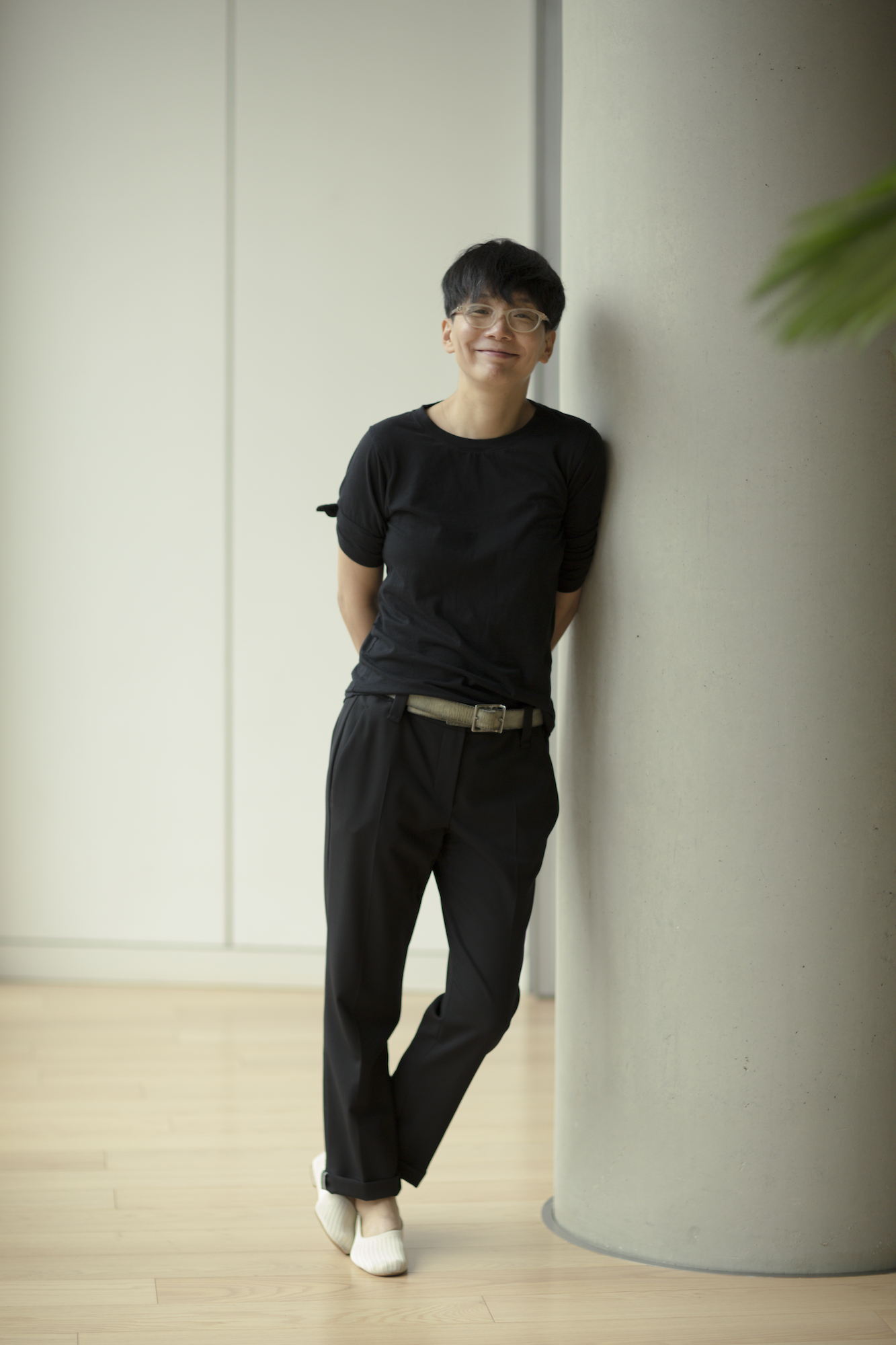
Chinese fashion mogul Li Lin sat in the aisle seat of the first row of the runway show, shunning the spotlight. This was the 30th-anniversary show of JNBY, one of China’s most sought-after native women’s clothing brands, this past August. JNBY, short for “Just Naturally Be Yourself”, is one of the 8 brands belonging to the mother company JIANGNANBUYI, which Li founded with her husband in 1994. The company now has over 2,000 stores worldwide. Undoubtedly, Li herself is considered one of the most influential figures in the fashion industry in China. Beyond her influence in fashion, Li has also established herself as a major art collector.
The JNBY show was held at By Art Matters, an art museum with an unconventional name founded by Li and located within OōEli (pronounced as oo-lee, which sounds like “at home” in the Hangzhou dialect), a commercial complex in the city of Hangzhou with 17 buildings nestled in greenery, which has now become a city landmark since its opening in October 2020. The event was perfectly timed between the two exhibitions. On the museum’s top floor, JNBY’s story was told—not in the conventional corporate manner, but through art installations that cleverly revisited key moments in the company’s history and brand culture.
Installation view of “JIANGNANBUYI 30th Anniversary Exhibition” at By Art Matters.
In 2012, Li invited the Italian starchitect Renzo Piano to design her dream project. This complex is partly home to JIANGNANBUYI’s headquarters and also features chic restaurants, a Tsutaya bookstore, swanky boutique shops, and exhibition and events venues, including the museum. The space almost feels like the realization of Li’s dream as a fashion mogul with a deep love for nature and art. When given a one-day break, Li often struggles to decide whether to visit the botanical garden or the art museum first.
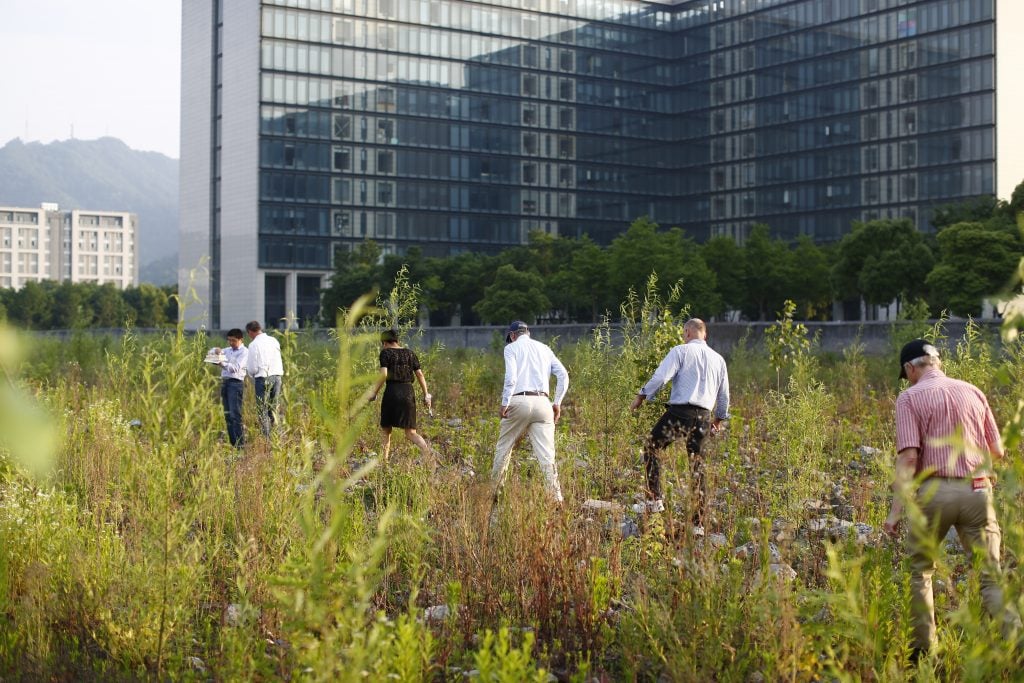
Li Lin with Renzo Piano and colleagues, during a site visit at what was to become OōEli.
OōEli is deeply imbued with Li Lin’s ideas and aesthetics. This low-profile art collector, born in Hangzhou, began her journey into the art world almost 30 years ago. In 1994, the same year she started her fashion venture, Li met artists Zhang Peili and Geng Jianyi, two pioneers of China’s avant-garde art scene. These friendships fueled Li’s curiosity and interest in art, despite her background in chemistry. Li has more than 2,000 artworks in her collection to date and has been listed consecutively in the Artnews Top 200 Collectors since 2016. This year, Li became a member of the Tate International Council.

The complex of OōEli, designed by Renzo Piano Building Workshop.
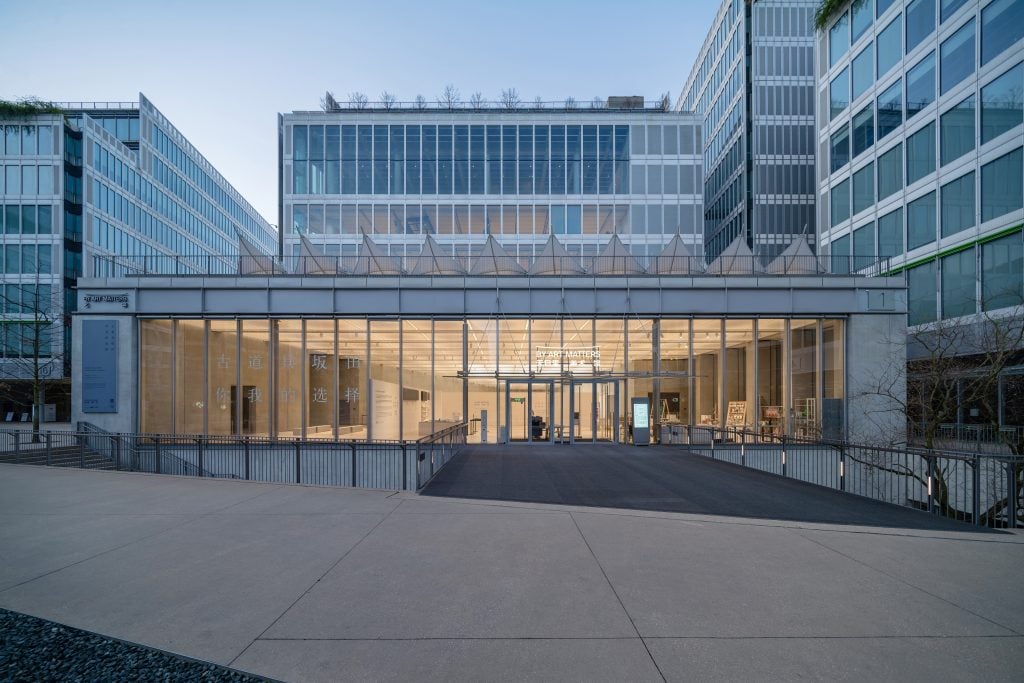
The facade of By Art Matters.
The day after the 30th-anniversary show, I met with a casually dressed Li at the JNBY office headquarters. In our conversation, she fondly recalled how, in the early days, she most envied the camaraderie among artists and the dynamic discussions that often sparked between them. She believes her interactions with artists have significantly influenced her aesthetic perspective.
Li Lin’s schedule is incredibly tight; in addition to working closely with her company’s design teams, she also attends all the major international art fairs. However, among all her art-related trips, her favorite activity remains visiting artists’ studios.
“I often absorb ideas and inspirations from artists and apply it to my life or work,” she admits. Not having a formal background in design, Li initially learned a great deal about color usage from artists such as Josef Albers. She began experimenting with unconventional color combinations, discovering new possibilities and chemical reactions. Before the advent of iPad apps, observing artists’ works was her way of “color-picking” with the naked eye. One season of JNBY’s designs was inspired by ukiyo-e print color palettes, she recalled.
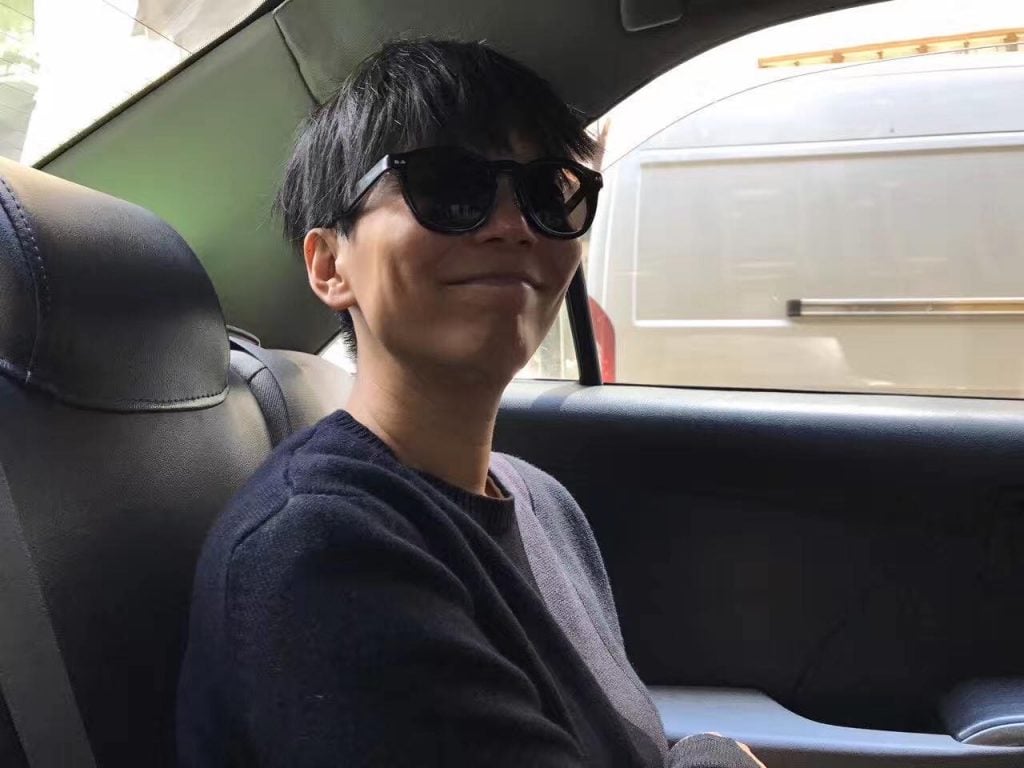
Li Lin is a frequent world traveler to see art and nature
Hangzhou, a two-hour drive from Shanghai, has become an e-commerce hub in China, home to global giants like Alibaba. This historic and scenic city is also where the China Academy of Art (CAA) is located, making it an ideal haven for artists. However, 30 years ago, Hangzhou—like other Chinese cities—did not have the vibrant art ecosystem it boasts today. Back then, buyers purchased artworks mostly for practical reasons, like needing something to decorate homes or helping out artist friends in need. Naturally, Li’s initial art collection started in her hometown, and she even became one of the earliest exhibition sponsors in China. “At the time, sponsoring an exhibition for 20,000 RMB (approx. $2800 as of today) could help to realize a lot.”
Art patronage has been a continuous commitment for Li. In 2008, she sponsored Art-Ba-Ba, an art media platform founded by artist Xu Zhen. That same year, she co-founded the Imagokinetics Lab with artist Geng Jianyi, which serves as an experimental playground for young artists. She also sponsored several key exhibitions at UCCA Beijing and Power Station of Art in Shanghai. In 2017, she sponsored Zhang Peili’s solo exhibition at the Art Institute of Chicago.
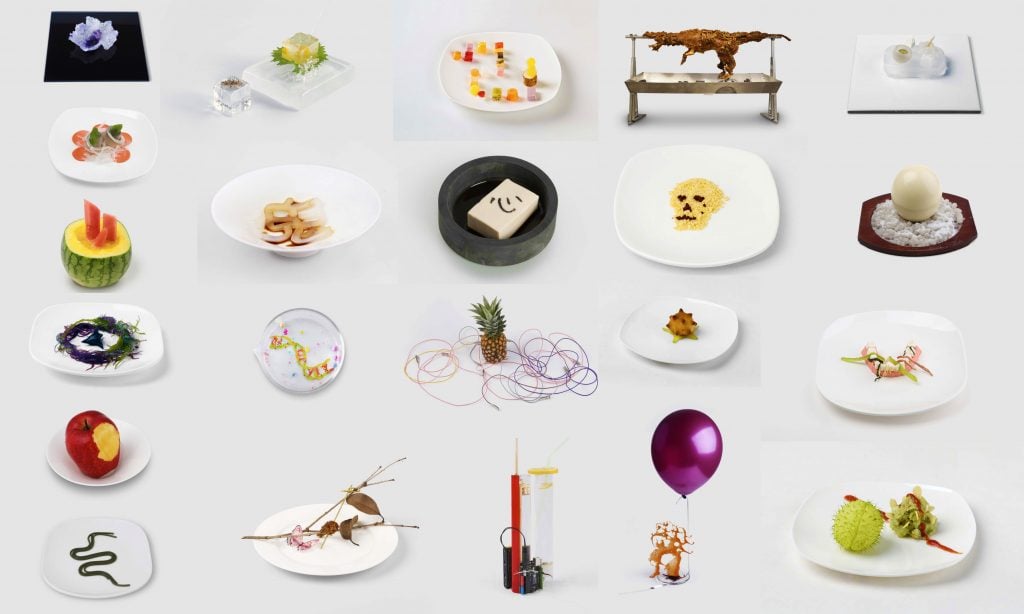
The monthly food project at Imagokinetics Lab has been ongoing since 2013. Each month, two groups of artists, designers, architects, and media experts work as chefs to make the most unusual and creative dishes
“There’s an emotional difference when collecting works by artists from Hangzhou,” she said, viewing herself as a sentimental collector who prefers to understand the background of the art through familiarity. Memories of her hometown are central to her collection.
Now, beyond the pivotal addition of OōEli, Hangzhou is home to various galleries and alternative spaces, offering an art scene and atmosphere distinct from those in Shanghai and Beijing. Li mentioned that she saw a record number of Hangzhou collectors at Art Basel in June, suggesting that the opening of By Art Matters in 2022 might have been a catalyst.
“From the beginning of buying art to truly becoming a collector, that’s a later story. Maybe this concept of identity has only become popular in China in the last twenty years, especially in the past decade. Today, there are still many Chinese collectors who genuinely love art. However, many remain low-key, not seeking publicity, although their works are often loaned for international exhibitions.”
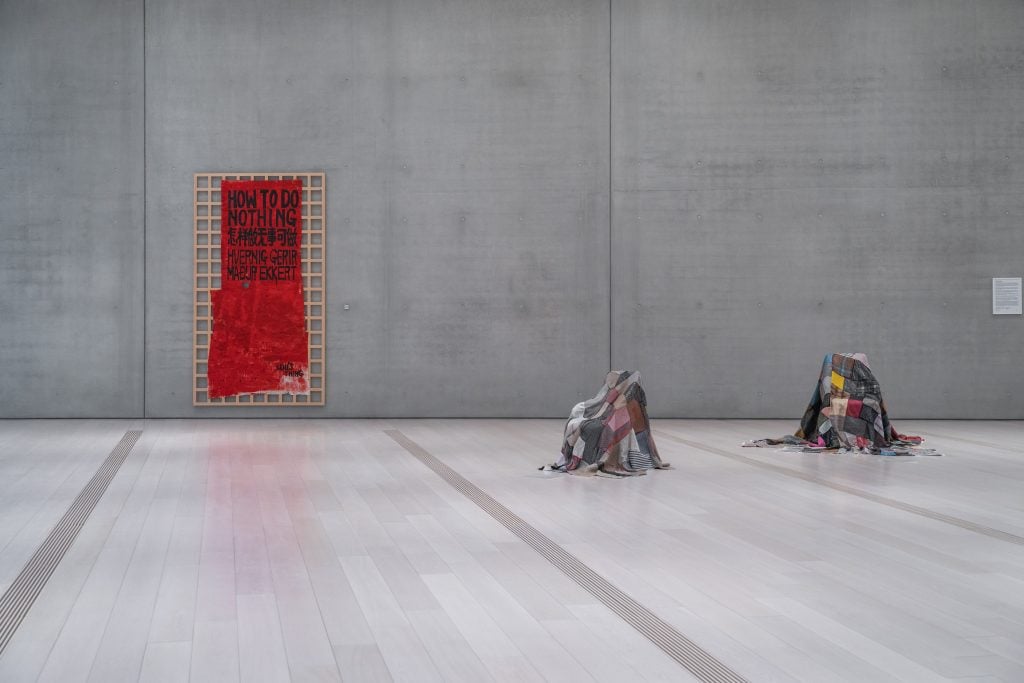
Installation view, “A Show About Nothing” at By Art Matters, December 2021 to April 2022
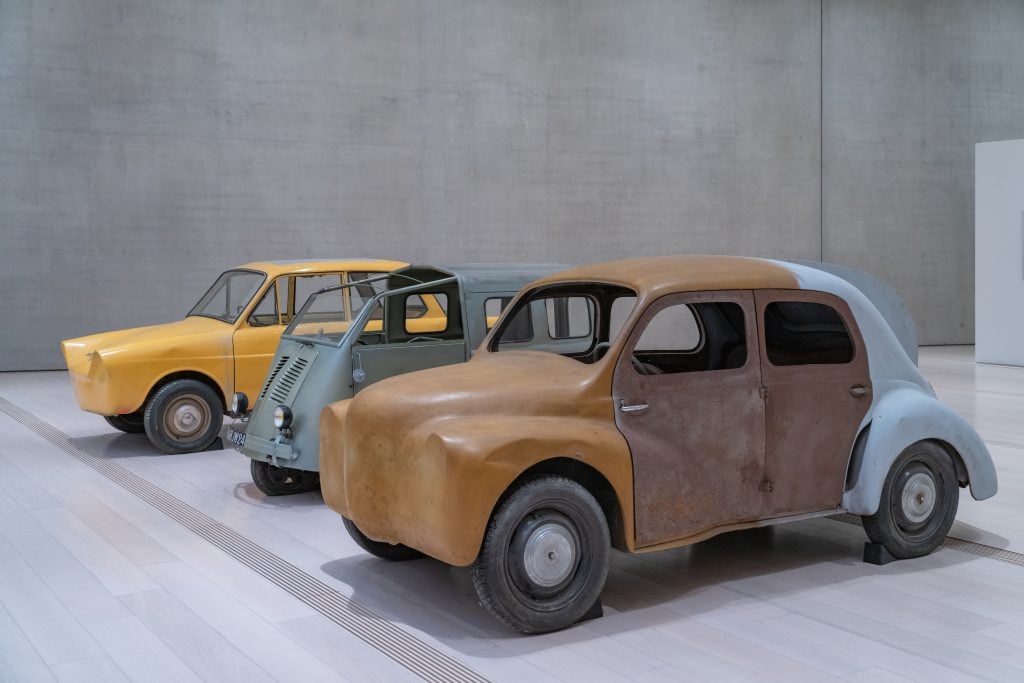
Installation view, “A Show About Nothing” at By Art Matters, December 2021 to April 2022
An early experience with the Marian Goodman Gallery marked a turning point in Li’s perspective. In 2006, Li visited artist Jeff Wall’s studio in Canada and, through his introduction, connected with the gallery. “This experience gave me a new understanding of galleries—I learned how they collaborate with artists and protect their rights. This was my first real encounter with a major international gallery,” Li said. “I also realized that a good gallery can truly support artists. For example, a good gallery can track the whereabouts of every piece by an artist and assist with exhibition loans.”
“But it feels like there was more freedom in the past, in terms of art practices and creating;” Li sighed, “ now, it seems that it is somewhat constrained, globally.”
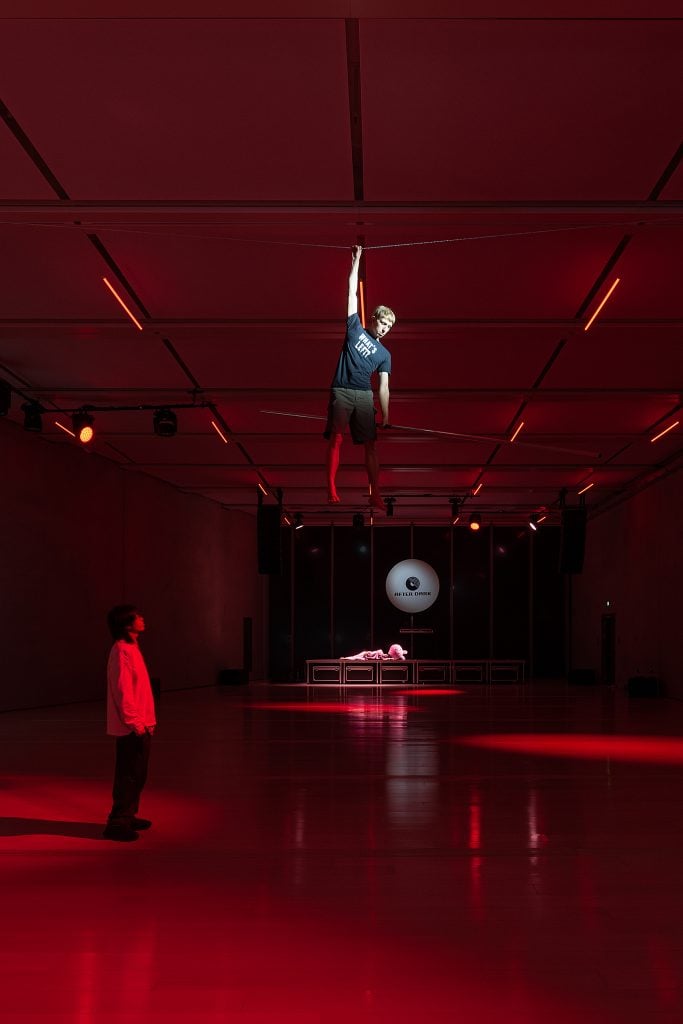
Installation view of “After Dark, Elmgreen & Dragset” 2023 at By Art Matters. Courtesy the Artists and By Art Matters
“What traits do you see in common in your collection? Or what kind of artwork touches you the most?” I asked Li. She thought for a moment and then recalled two words a gallerist once used to describe her preference in art: “The aura and the twist.” From among her recent acquisitions, Li mentioned Venetian artist Chiara Enzo as embodying the two.
“She’s very young, with great academic-trained skills who graduated from the Venice Academy of Fine Arts. I discovered her work at Art Basel, and although the piece wasn’t large, there was something about it that caught my attention—I sensed ‘scars’ in her painting. Later, I learned through conversation with the artist that she has had congenital diabetes since childhood, and many of her paintings are related to her life experiences and memories of injections,” she said.
Before founding the museum, Li had already gained experience supporting a non-profit art space Imagokinetics Lab. However, running a museum is vastly different,” Li admits. Originally, the plan was to expand the Imagokinetics Lab into a larger space, but she was “nudged” by Renzo Piano, and the project gradually grew into something much larger. Later, Piano introduced her to Italian curator Francesco Bonami as the museum director.
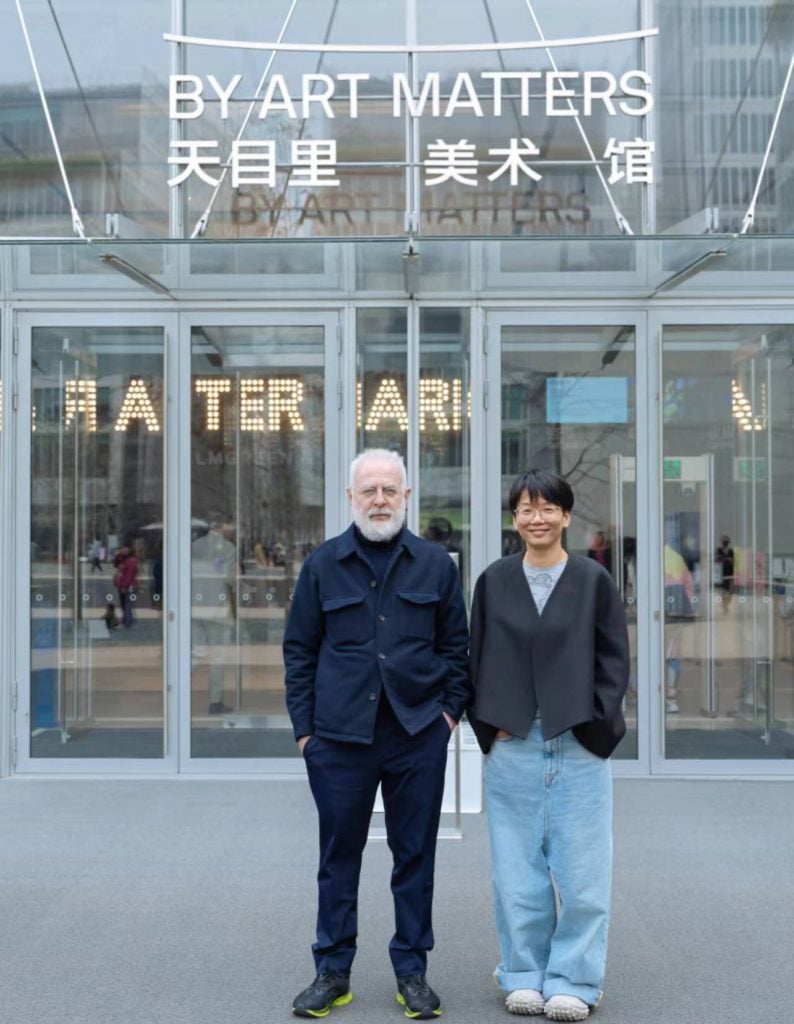
Francesco Bonami and Li Lin in front of By Art Matters.
“Operating a private museum in China isn’t easy. We are still exploring how to engage the public and encourage more people to develop the habit of visiting art museums,” she noted. In its first two years, the museum has organized various types of exhibitions including a show by the artist duo Elmgreen & Dragset, an ambitious 72-artist group show surveying 35 years of Chinese media art, and an unconventional retrospective of late Japanese antique dealer and aesthete Kazumi Sakata.
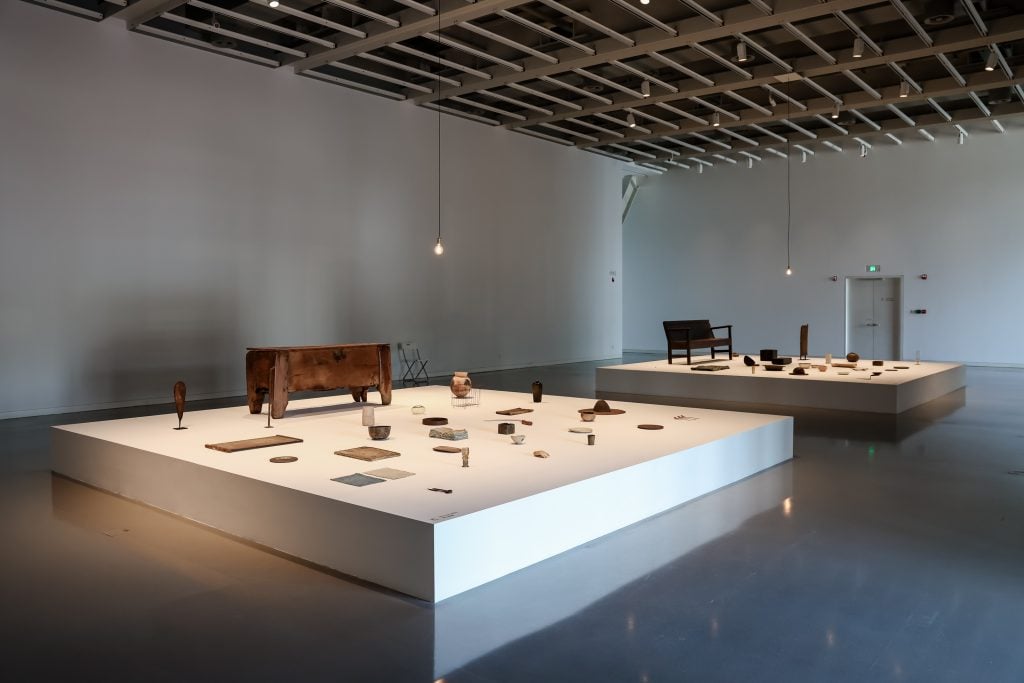
“Kazumi Sakata: Our Choice” was an exhibition about this Japanese antique dealer and aesthete
Li’s 30 years of entrepreneurship and collecting seem to parallel the 30-year cycle of China’s contemporary art market. “From a personal perspective when the art market was less developed, works were affordable, but artists struggled to survive without a market. On the other hand, when the market is too strong, especially when young artists thrive in such an environment, it may not be beneficial for their creativity,” she explained, “When they know their work will sell easily, it might affect the way they create. So, artists need to recognize the market more maturely, and galleries should also mature, not sell art like a commercial product.”
Li smiles, “My ‘selfish’ wish now is that promising artists don’t see their prices skyrocket too much and that their prices remain stable. Collectors, after all, have limited purchasing power—I make money from my own business, and now I have a museum to support as well.”
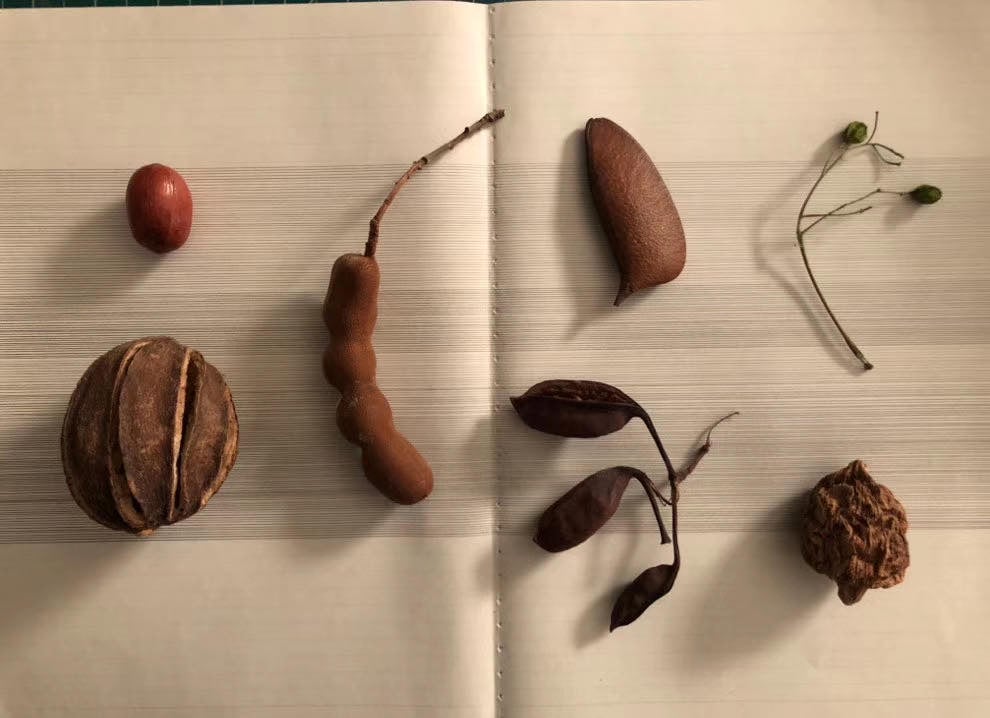
Li Lin loves to make art of found objects in nature
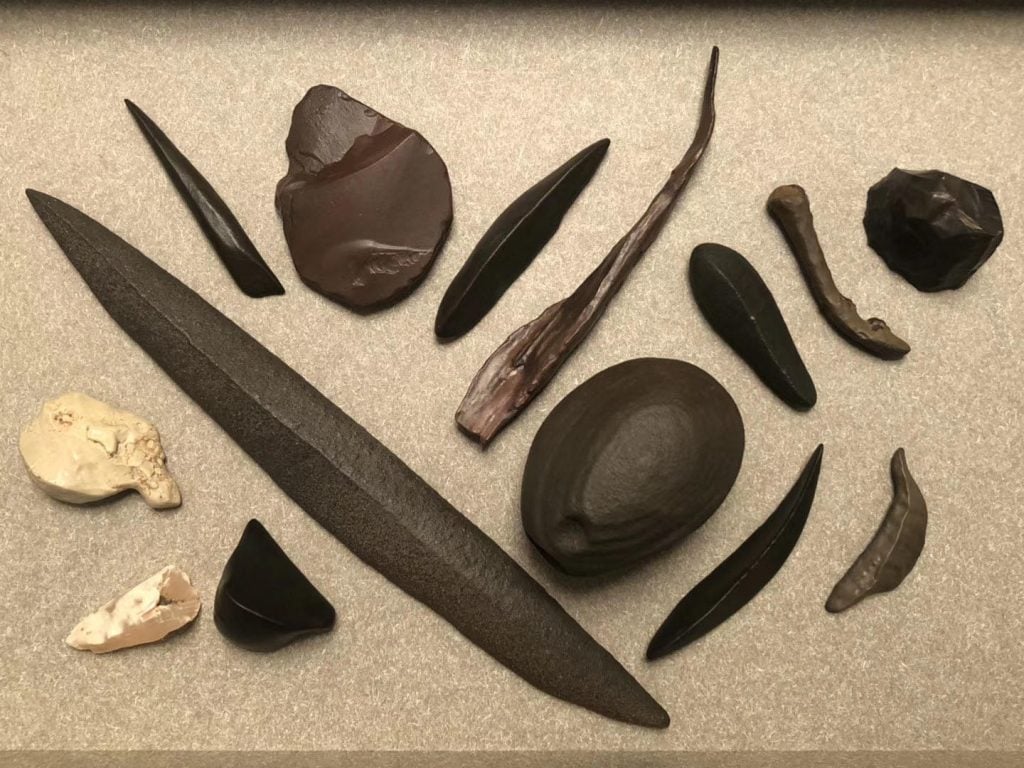
Li Lin loves to make art of found objects in nature
In the end, I asked Li a staple question posed to all collectors: Who is your favorite artist? She thought for a moment and answered, “Definitely those artists who do conceptual work.”
“If I could only own one artist’s work,” she added another self-question: “It would undoubtedly be Brancusi.”







